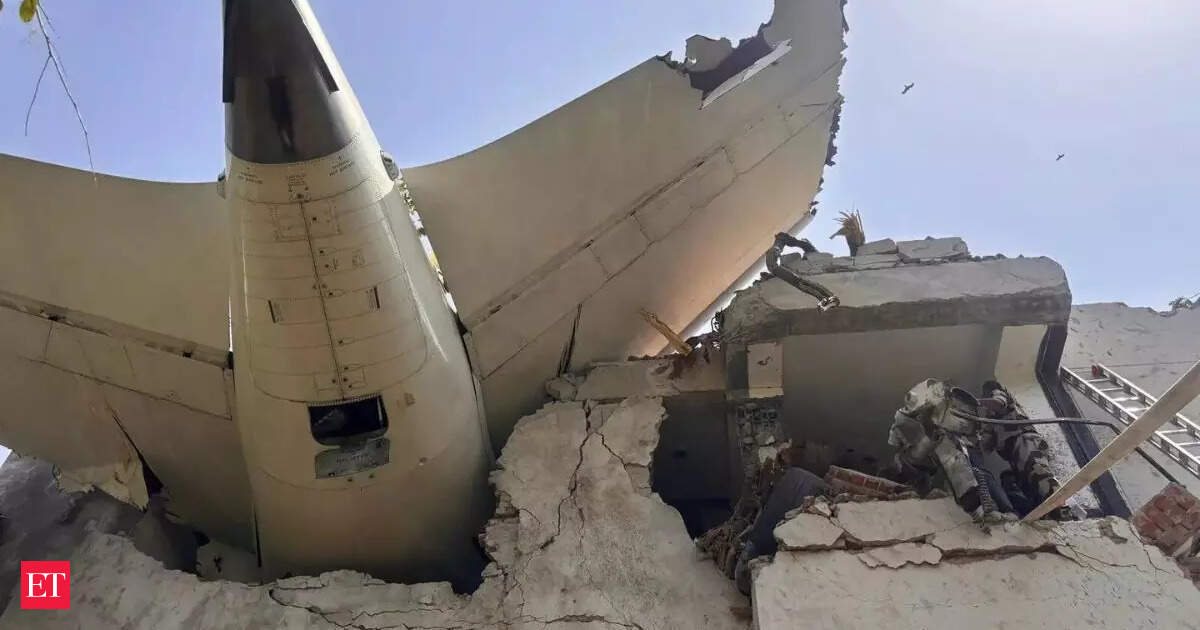A pattern of recurring technical failures
The Aircraft Accident Investigation Bureau’s initial findings suggest that a fuel cut-off to the engines led to the crash of the AI Boeing 787-8 Dreamliner. This fits into a broader trend of technical issues faced by Indian carriers. While pilots have managed these malfunctions in most cases, experts warn that some failures may become unmanageable.
DGCA’s RTI reply confirms that engine failures were reported during both take-off and mid-air phases. “A total of 65 incidents related to in-flight shutdown of engines from 2020 to 2025 (till date) were reported across India,” the aviation regulator stated.
All 65 aircraft landed safely using the remaining engine. The reported causes include fuel-related issues and mechanical failures.
Technical issues behind engine failures
Captain C S Randhawa, president of the Federation of Indian Pilots, said, “Primary causes of engine shutdowns include blocked fuel filters, fuel contamination with water, interrupted fuel supply to engines, and foreign objects entering engine stack, all of which can halt flight operations.”
Experts noted that while such issues are not unusual globally, the frequency of incidents in India is concerning.
Eleven Mayday calls, mostly due to technical glitches
From January 1, 2024, to May 31, 2025, 11 Mayday calls were issued by aircraft operating in Indian airspace. These included technical issues requiring emergency landings. Four of these flights landed in Hyderabad.The data excludes the June 19 IndiGo flight from Guwahati to Chennai that was rerouted to Bengaluru due to congestion and later reported low fuel 35 km from landing.
Anil Rao, secretary of the Airline Pilots’ Association of India, said, “Flight crew initiate MAYDAY calls when confronted with critical emergencies such as aircraft fires, engine failures or situations posing imminent danger, necessitating immediate landing or grounding as continued flight becomes unsafe.”
DGCA outlines its safety responsibilities
AX Joseph, director of air safety at DGCA, stated that the agency regularly publishes civil aviation requirements, safety circulars, and public notices to maintain operational safety standards.
India’s global safety ranking
Though experts agree that engine issues and emergency signals occur globally, India’s international safety ranking remains a concern. The International Civil Aviation Organisation currently ranks India 48th in its global aviation safety oversight programme.
DGCA issues directive for fuel control switch checks on Boeing aircraft
Meanwhile, in the aftermath of Air India flight crash in Ahmedabad, India’s aviation regulator has directed all airlines operating Boeing 787 Dreamliner and certain B737 aircraft to inspect the locking mechanism of fuel control switches. These aircraft are operated by carriers such as Air India Group, IndiGo, and SpiceJet. The DGCA instruction follows a previous bulletin issued by the US Federal Aviation Administration (FAA) in December 2018.
The DGCA said, “It has come to the notice of DGCA, that several operators—internationally as well as domestic—have initiated inspection on their aircraft fleet as per the (Dec 17, 2018) SAIB…. all airline operators of the affected aircraft are hereby advised to complete the inspection (by) no later than July 21, 2025.”
Global airlines begin safety checks after India crash probe
Following the crash of an Air India Boeing 787 last month, several international airlines have started inspecting the locking mechanisms of fuel control switches in their fleets. Etihad Airways has instructed its engineers to carry out inspections, while Singapore Airlines has also initiated similar checks, according to people familiar with the matter.
These actions come despite FAA and Boeing assuring operators that the fuel switch locks are safe. Many aviation authorities mirror FAA safety recommendations, but they can issue their own directives based on operational risk assessments.
Investigation highlights possible confusion over fuel switch settings
A preliminary investigation report by India’s Aircraft Accident Investigation Bureau revealed that moments before the crash, both fuel control switches on the Air India flight were moved to the “cutoff” position, leading to engine failure. The switches, which control the fuel supply to the engines, are located below the thrust levers and include protective mechanisms to prevent unintentional movement.
The report noted that both pilots appeared confused by the switch settings. Investigators are focusing on how and why the switches were moved, while also examining earlier FAA advisories on similar issues.
Air India did not act on earlier FAA advisory
Air India informed investigators that it did not carry out the FAA-recommended inspections from the 2018 bulletin, as they were advisory and not mandatory. The bulletin was issued after reports of switch lock disengagement on Boeing 737 aircraft, but no such issue had been reported on the 787 model at the time.
An engineer certified for Boeing 787 operations explained that the airline replaced the throttle control module twice, in 2019 and 2023. In the Boeing 787, the fuel control switches are integrated with the thrust control module. Replacing the module involves replacing the switches as well.
(Inputs from TOI)




